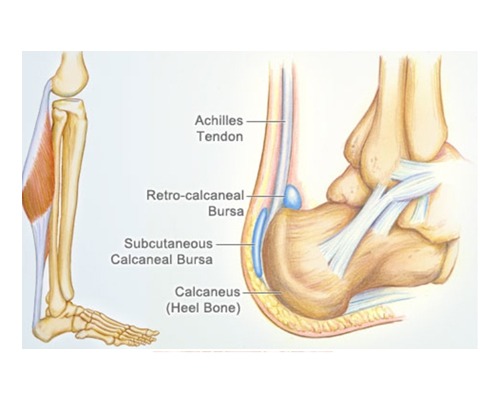The Achilles Tendon is one of the most commonly injured structures in the human body. This is most likely due to the active lifestyle we now lead and the amount of time we spend on our feet.
The Achilles is the largest tendon in the body and connects your gastrocnemius/Soleus (Calve muscles) to your heel bone.
A complete Achilles Rupture involves the tendon completing snapping. Often you will hear a snap or popping sound. A partial tear will cause some soreness but you will still have full use of the ankle.

How will I know the difference?
A full Achilles rupture will result in complete loss of strength and function of the ankle. You will find it extremely difficult to walk or complete any exercise. Normally at the time of the injury happening you will hear a large pop or snap sound. Often there will be a large amount of swelling around the ankle. In some cases the calve muscles will move up into a higher position behind the back of the knee.
With a partial rupture there will be no popping/snapping sound and you will still have full function of the ankle. There will be some localised soreness around the Achilles tendon and it may also feel bruised. Some swelling may be present but this will slowly decrease.
How do these injuries happen?
With both a complete/partial rupture the mechanism of injury is very similar
- Quick sharp movement which puts too much stress through the ankle causing damage to the tendon. This could be turning quickly in a sport such as football or netball.
- Large increase in training volume or intensity
- A fall where you land awkwardly and put pressure onto the ankle
- A weakened tendon due to old age or use of corticosteroid medication
- Previous history of tendinosis
- A direct trauma to the Achilles tendon
What treatments can be done for a partial rupture?
Initially you should be focussing on completely resting the ankle and regularly icing of the area around the tendon. After this gentle stretches of the calve muscles along with ankle mobilisations will help. We recommend the exercises below. If you find that after 4 weeks of rest the ankle is still sore and you are unable to exercise consult a sports injury specialist.


What treatments can be done for a complete rupture?
If you fear you have a complete rupture please consult your doctor immediately. They will initially send you for imaging to determine the extent of the damage. Once imaging has been completed normally either casting of the ankle or surgery will be required.



